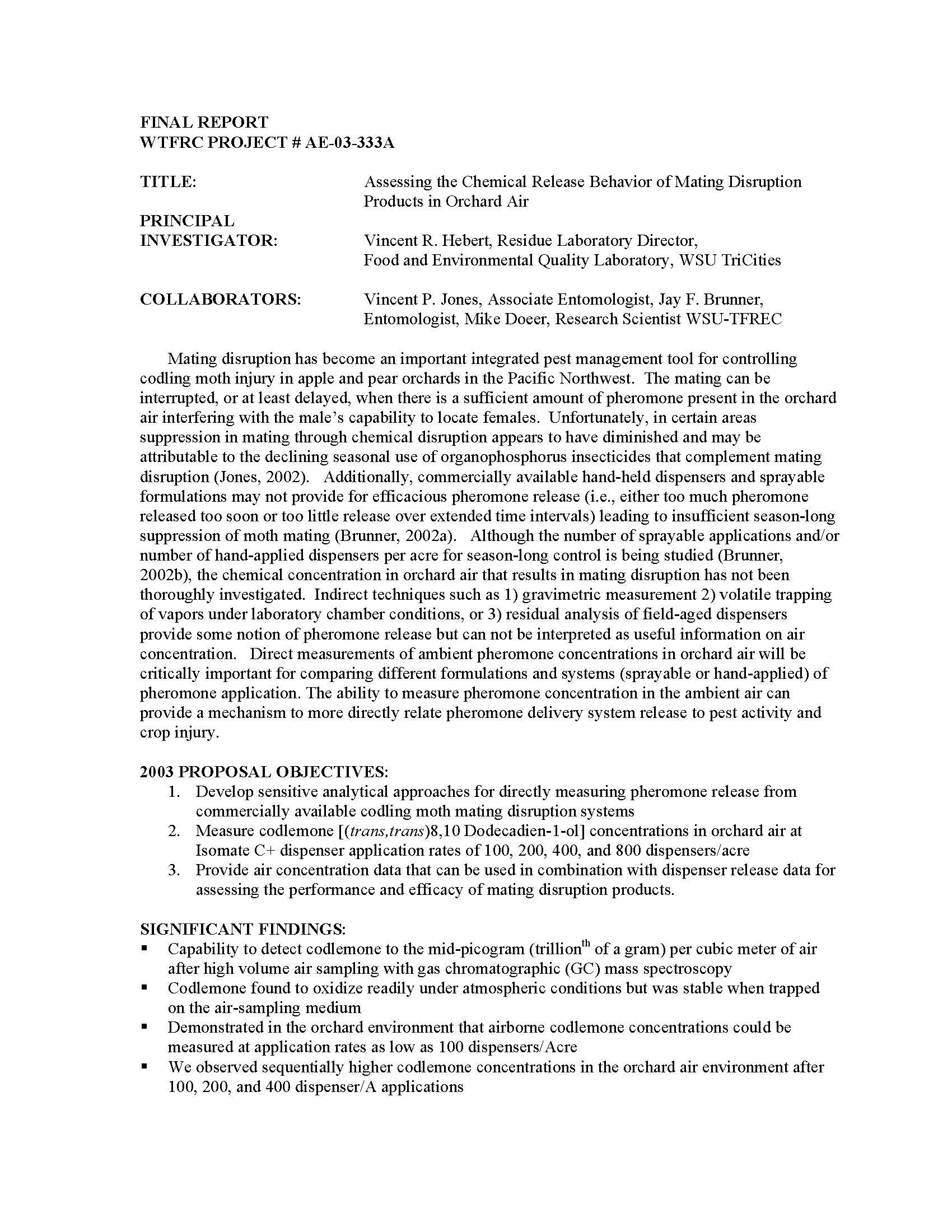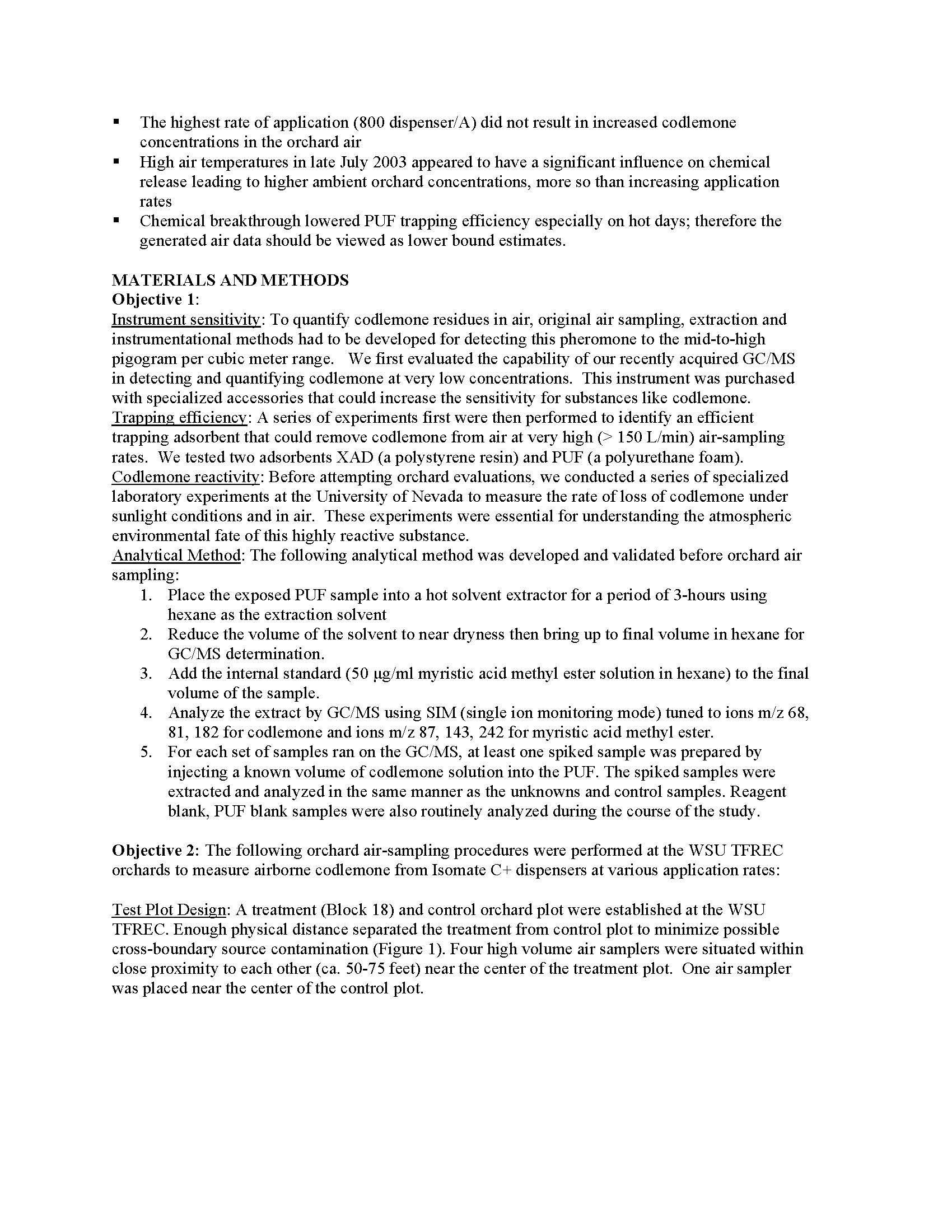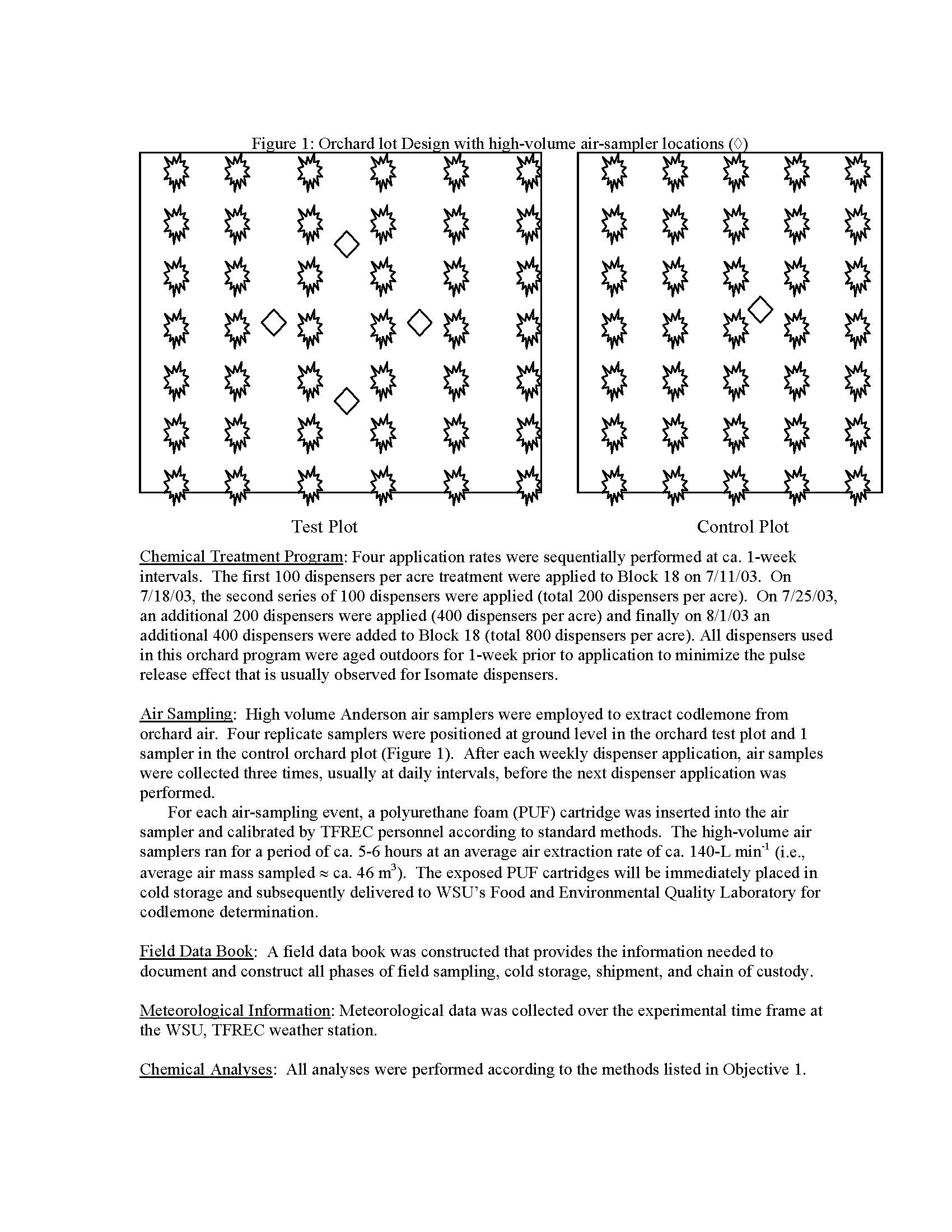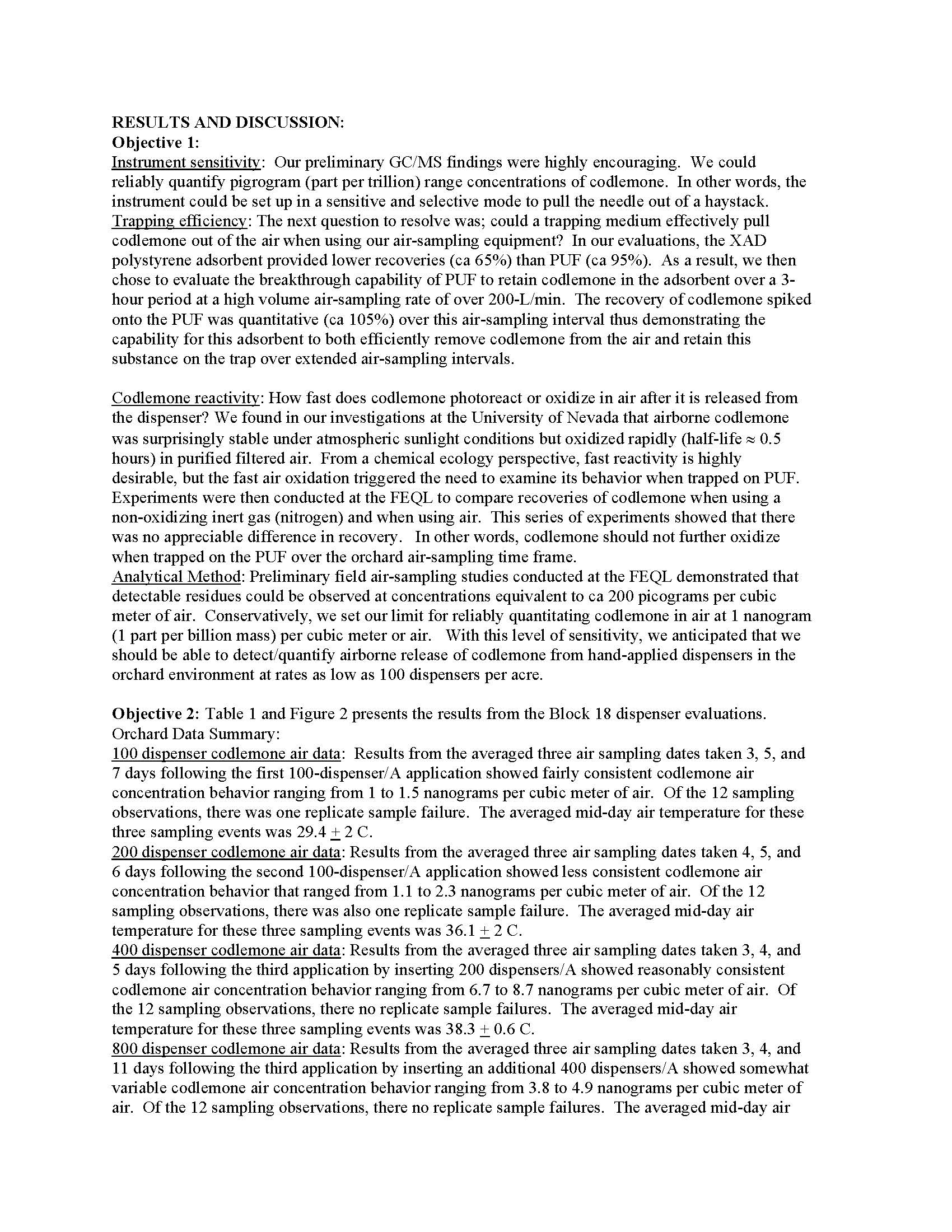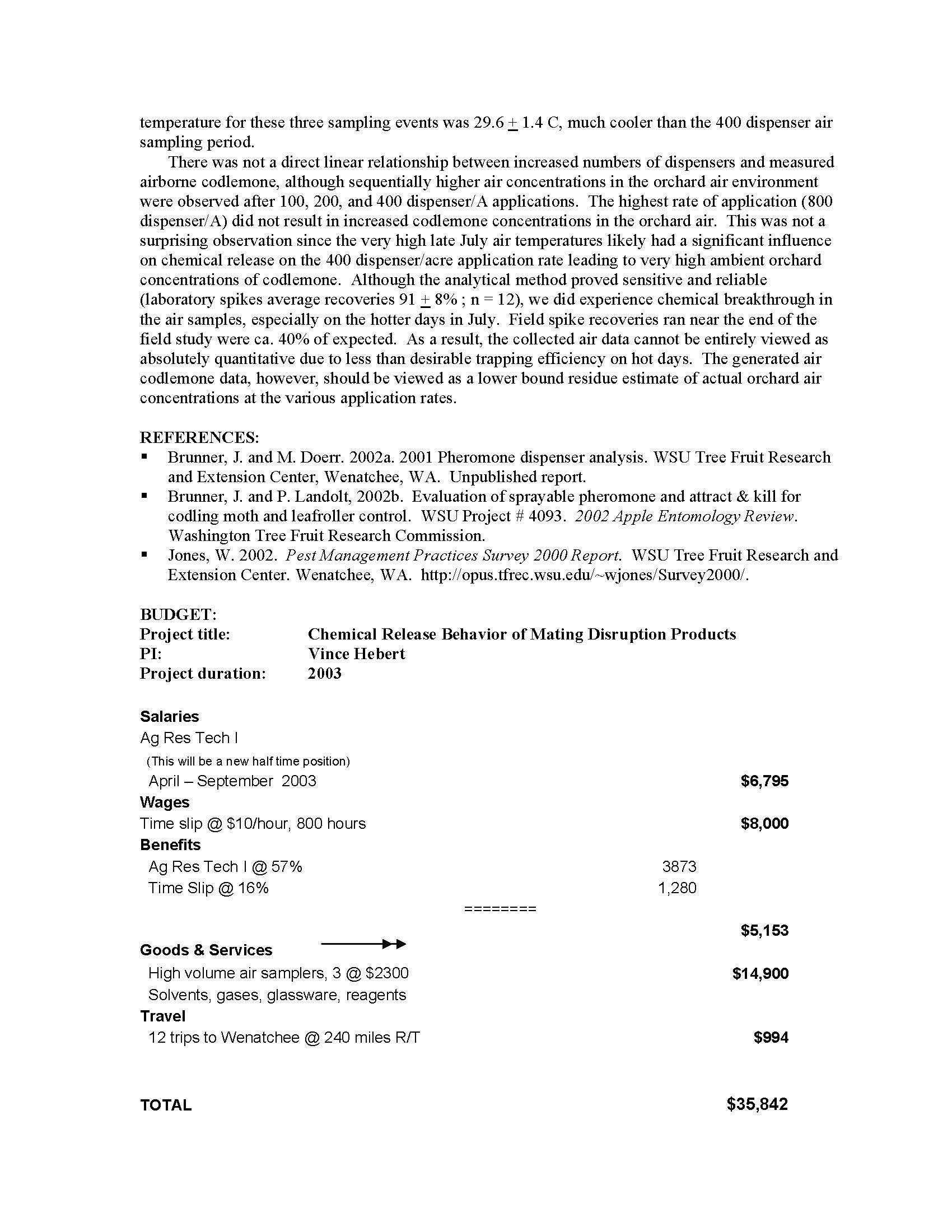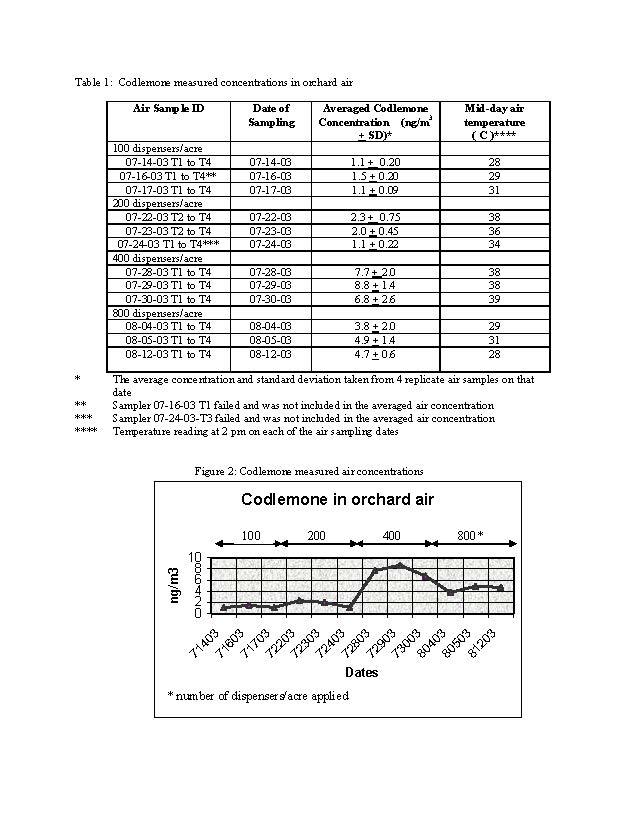Assessing the Chemical Release Behavior of Mating Disruption Products in Orchard Air
Author: Vincent R. Hebert
Published: 2004
Summary: Mating disruption has become an important integrated pest management tool for controlling codling moth injury in apple and pear orchards in the Pacific Northwest. The mating can be interrupted, or at least delayed, when there is a sufficient amount of pheromone present in the orchard air interfering with the male’s capability to locate females. Unfortunately, in certain areas suppression in mating through chemical disruption appears to have diminished and may be attributable to the declining seasonal use of organophosphorus insecticides that complement mating disruption (Jones, 2002). Additionally, commercially available hand-held dispensers and sprayable formulations may not provide for efficacious pheromone release (i.e., either too much pheromone released too soon or too little release over extended time intervals) leading to insufficient season-long suppression of moth mating (Brunner, 2002a). Although the number of sprayable applications and/or number of hand-applied dispensers per acre for season-long control is being studied (Brunner, 2002b), the chemical concentration in orchard air that results in mating disruption has not been thoroughly investigated. Indirect techniques such as 1) gravimetric measurement 2) volatile trapping of vapors under laboratory chamber conditions, or 3) residual analysis of field-aged dispensers provide some notion of pheromone release but can not be interpreted as useful information on air concentration. Direct measurements of ambient pheromone concentrations in orchard air will be critically important for comparing different formulations and systems (sprayable or hand-applied) of pheromone application. The ability to measure pheromone concentration in the ambient air can provide a mechanism to more directly relate pheromone delivery system release to pest activity and crop injury.
Keywords:

